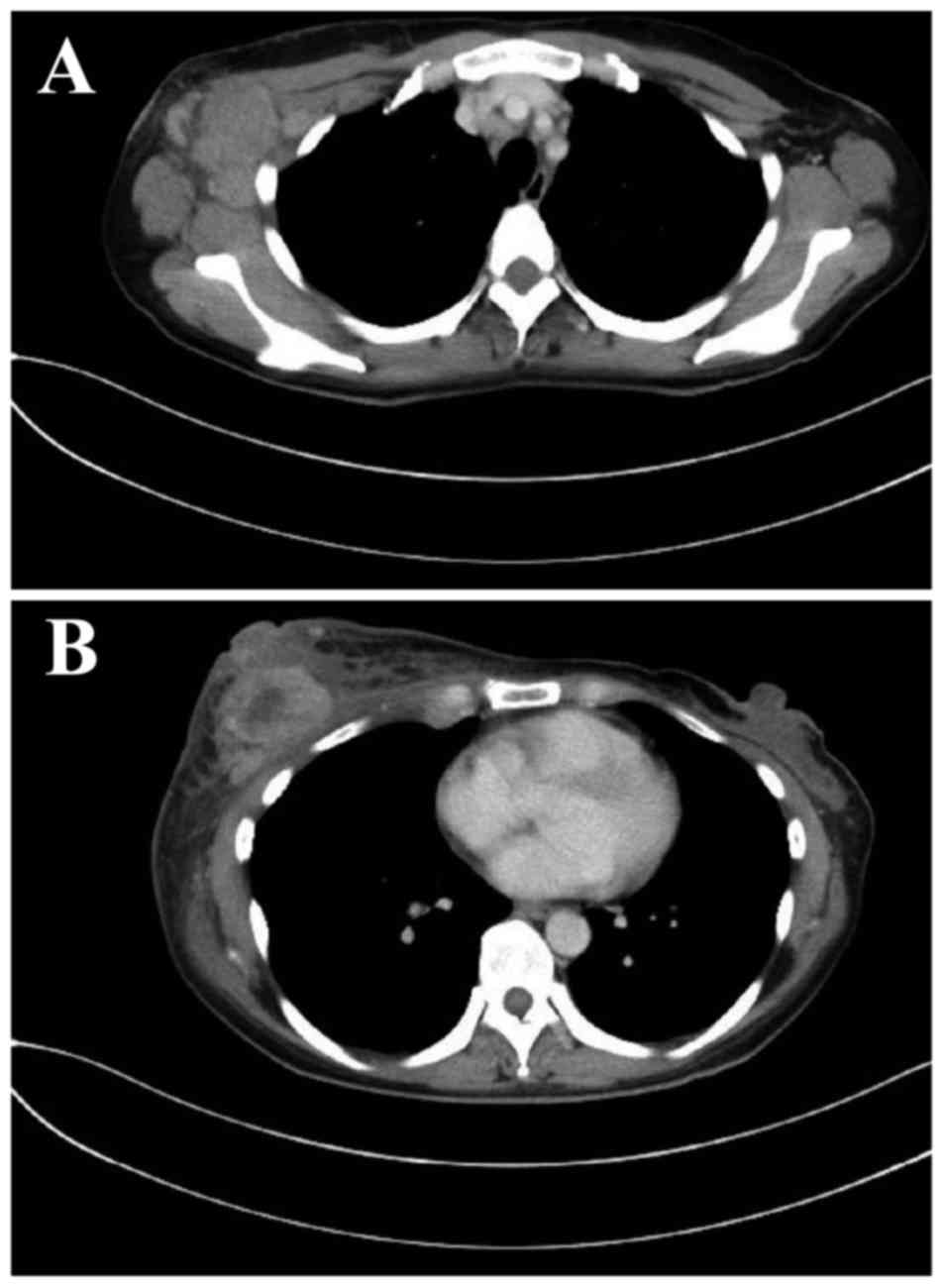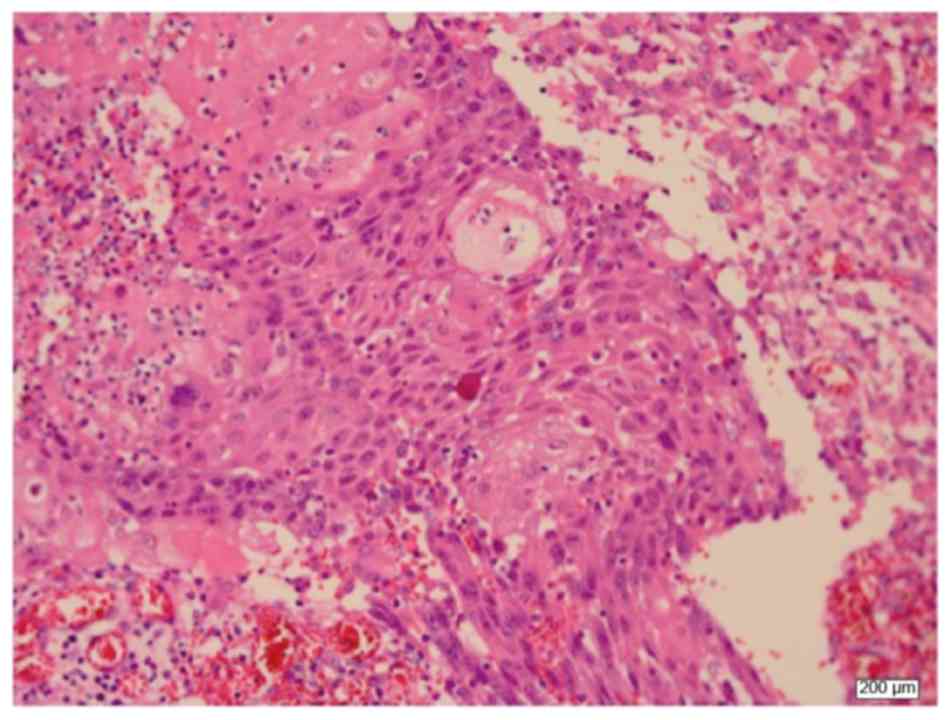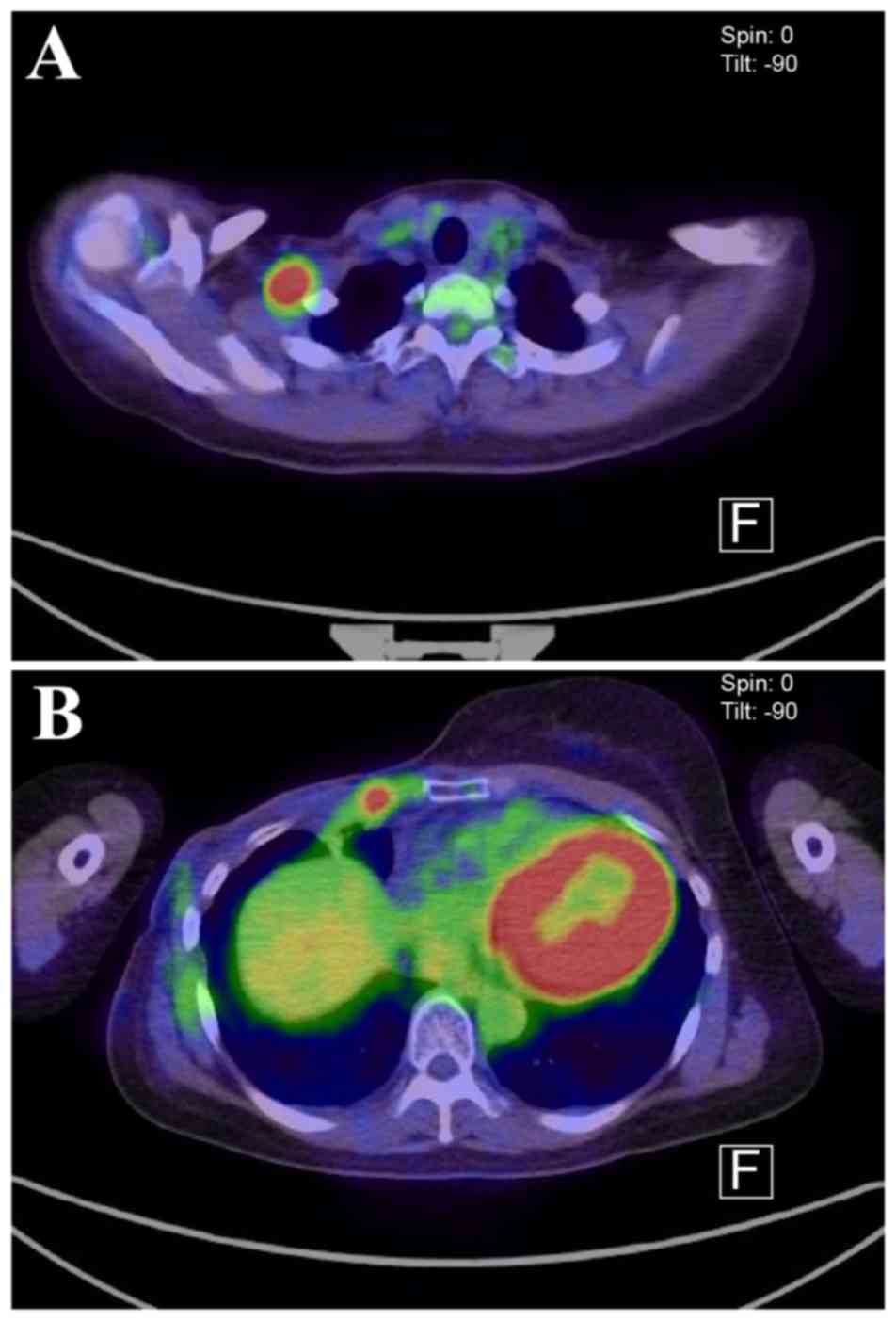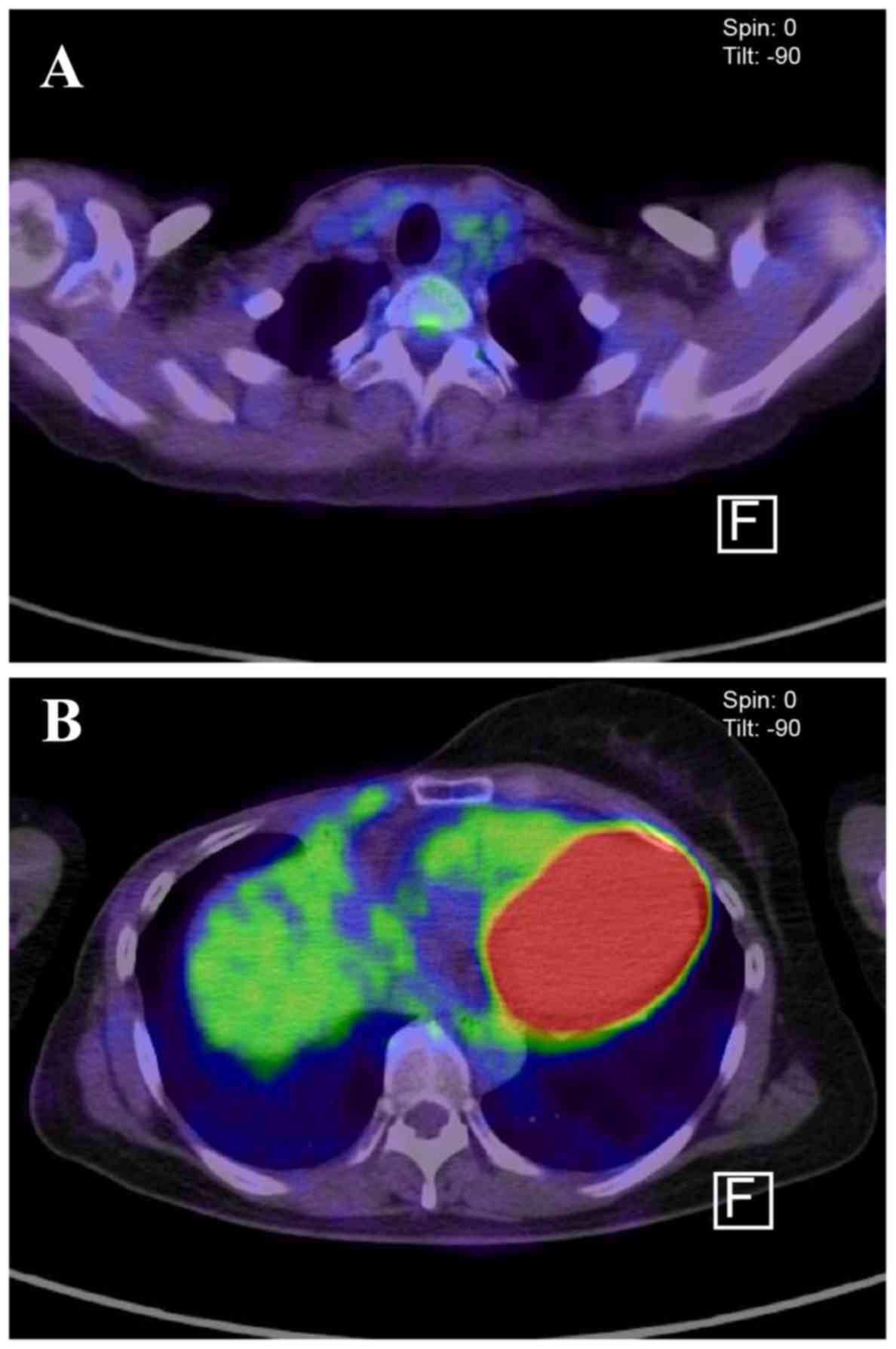Higher efficacy and complete response with administration of eribulin for recurrent squamous cell breast carcinoma: A case report
- Authors:
- Published online on: July 19, 2018 https://doi.org/10.3892/mco.2018.1676
- Pages: 318-320
Metrics: Total
Views: 0 (Spandidos Publications: | PMC Statistics: )
Total PDF Downloads: 0 (Spandidos Publications: | PMC Statistics: )
Abstract
Squamous cell carcinoma is a rare histological type of breast cancer classified as metaplastic carcinoma. Metaplastic carcinoma involves differentiation of the breast glandular duct cells into mesenchymal tissues. While the chemotherapy regimen for metaplastic carcinoma is often similar to that for invasive ductal carcinoma, recurrence is associated with a poor prognosis due to the inadequate therapeutic efficacy of the regimen. We herein present the case of a 42-year-old female patient who underwent mastectomy of the right breast and right axillary node lymphadenectomy for T4N3aM0 breast cancer stage. The cancer was histopathologically diagnosed as squamous cell carcinoma of the breast. Adjuvant cyclophosphamide-epirubicin-fluorouracil (CEF) postoperative chemotherapy was administered, and lymphadenectomy of right-sided parasternal lymphatic metastases with pleural drainage was subsequently performed. Radiotherapy was administered to the thoracic wall and supraclavicular lymph nodes at 60 Gy. Positron emission tomography (PET)‑computed tomography (CT) examination 3 months after the radiotherapy identified accumulation of fluorodeoxyglucose (FDG) in a supraclavicular lymph node and the thoracic wall; hence, a chemotherapeutic regimen with eribulin was initiated. At 11 months after initiation of eribulin, complete response was achieved, indicated by the absence of FDG accumulation in both the supraclavicular lymph node and the thoracic wall on PET-CT. The treatment efficacy of eribulin is considered to be a result of the mixed morphology of squamous cell carcinoma, including the presence of an epithelial component, such as adenocarcinoma cells, and a mesenchymal component, in the form of sarcomatoid cells. Eribulin displayed an effect similar to that of adriamycin against malignant soft tissue tumors and was shown to effectively target mesenchymal components. In cases of reduced expression of the DNA repair pathway components, such as in metaplastic carcinomas, eribulin may be more effective compared with adriamycin, the mechanism of action of which involves inhibition of DNA synthesis. A superior therapeutic effect was obtained with eribulin in squamous cell carcinoma. Therefore, eribulin appears to be a promising, effective therapeutic choice for the management of metaplastic carcinomas, including squamous cell carcinomas.













